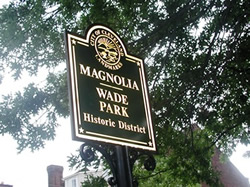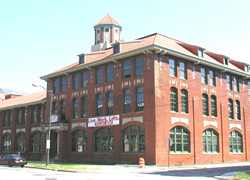
Formally designating structures or districts as ?historic? is an important tool for preserving Cleveland?s past. | PRESERVATION
GOAL: Foster preservation of historically and architecturally significant buildings and districts in the City of Cleveland
Issues
Tiring of cookie-cutter development that ends up making every street corner in America look like every other corner, with the same monotonous “fast food” style of architecture, Americans are increasingly drawn to places that have a distinctive character and ambiance. In Cleveland, it is the classic architecture of historic buildings that helps create this distinctive character. Cleveland’s historic resources, however, are threatened every day by market forces, as well as by those who fail to recognize the true value of these irreplaceable assets.
Through its Landmarks Commission and through its use of the federal Section 106 requirements, Cleveland possesses the regulatory tools necessary to preserve its historic buildings and districts. Since its creation in 1973, the Commission has designated 22 local historic districts, 29 National Register historic districts, and 234 individual landmark buildings and structures. The real challenge facing Cleveland is how re-define the real estate market, educate property owners, and provide the financial incentives to ensure the economic viability of the community’s landmark buildings. |

Some older buildings can be preserved by renovating them for new uses that capitalize on their unique features and character. [residential conversion of Tower Press Building at Superior and East 18th] |
Policies
- Marketing. Capitalize on the presence of architecturally and historically significant buildings in promoting and marketing Cleveland’s older neighborhoods as competitive places to live and visit
- Economic Re-Use. Identify and pursue opportunities for economically viable re-use of significant structures threatened by neglect and possible demolition.
- Design Standards. Establish design review standards that are effective and reasonable in protecting historic structures and in ensuring that new development is complementary to character of historic districts.
- Designation. Protect historic buildings and districts through designation as local landmarks and through listing on the National Register of Historic Places.
- Education. Increase public awareness of the history and architecture of Cleveland and its neighborhoods, as well as the value of historic preservation.
- Technical Assistance. Provide property owners with technical assistance in maintaining and rehabilitating historic buildings.
- Preventative Maintenance. Adopt and enforce laws that require preventative maintenance of historic buildings and structures.
- Funding. Retain and expand funding for historic preservation at all levels of government, including tax credits for rehabilitation.
|





